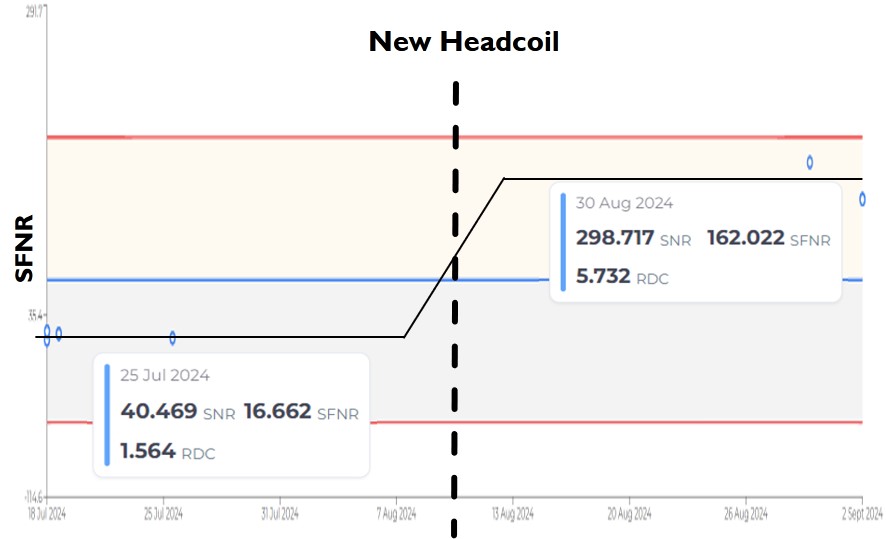Case Study: VERIFLUX Uncovers Hidden MRI Issues at a Beta Test site
When an early beta test site commissioned a new MRI scanner with a 32-channel head coil, they expected nothing but the best in diagnostic capabilities.
On July 18 2024, Gold Standard Phantoms arrived at the site to demonstrate VERIFLUX. This innovative solution promised to enhance MRI quality assurance processes.
The results showed a poor Signal-to-Noise Ratio (SNR) and Signal Fluctuation-to-Noise Ratio (SFNR),
both significantly lower than what would be expected from a high-quality MRI system.
Additionally, the Radius of Decorrelation (RDC) was alarmingly low.
These metrics were red flags,
suggesting a potential problem with the newly installed head coil.
In stark contrast, the standard fMRI test performed on a volunteer that same afternoon showed no apparent issues.
The discrepancy was puzzling, but it highlighted a crucial point: sometimes, what we don't see can be just as important as what we do.
As Carl Sagan famously said:
"Absence of evidence is not evidence of absence."

This situation perfectly exemplified the wisdom of those words. Intrigued by VERIFLUX's findings, the hospital staff decided to dig deeper.
They called in an engineer to conduct a thorough Quality Assurance (QA) check on the 32-channel head coil. The results were conclusive:
The coil failed the QA check due to excessive noise,
confirming VERIFLUX's initial assessment.
What makes this discovery even more remarkable is that the MRI manufacturer had conducted their own tests, which didn't indicate any need for coil replacement.
Without VERIFLUX, this critical hardware issue might have gone undetected, potentially compromising patient diagnoses and treatment plans.
More about VERIFLUX here: https://goldstandardphantoms.com/veriflux/

